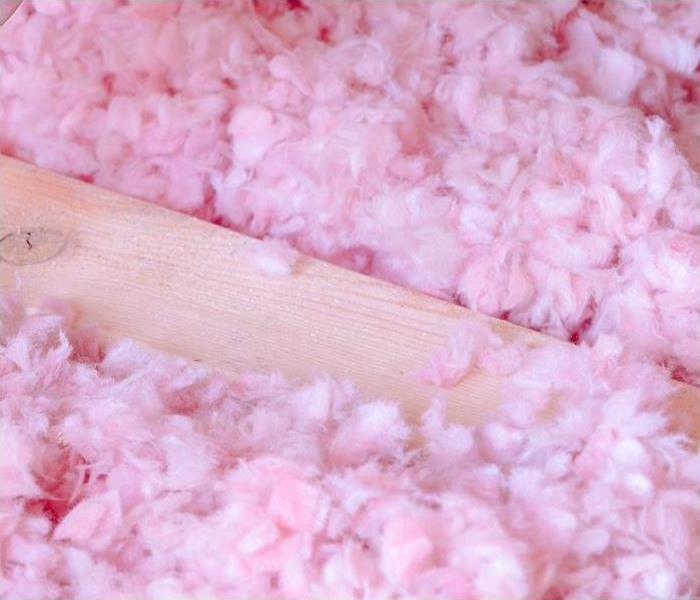Wet Insulation: How A Fiberglass Material Can Lead to Severe Damages
8/9/2021 (Permalink)
Wet insulation has a distinct pungent odor.
Fiberglass insulation is a great material in any home to keep warm air inside and cold air out. However, during water damage events (such as flooding, pipe burst, or sewage back-up), the fiberglass insulation will be damaged and soak up water like a sponge, leading to mold growth if not dried quickly. This blog post discusses how wet insulation is one of the most common causes of mold damage and what can happen if it is not mitigated quickly.
What is insulation?
Insulation was designed for temperature regulation in a home; it will keep a home warm in the winter and cool in the summer. You can find insulation in the attic and walls of a home. Most of the time, insulation will sit in ceilings and walls but can also be found in the floors above vented crawl spaces.
The most common type of insulation found in a property is fiberglass insulation. Fiberglass insulation is a type of insulation made up of small glass fibers that are compressed together.
Wet insulation issues
Wet fiberglass material soaks up water just as easily as a sponge does; this is why water damage events such as flooding will lead to mold growth when not dried quickly.
It's important to remove any wet materials from an affected area so mold won't grow. When mold is left to grow for too long, the property will end up resulting in structural issues like wood rot, which can devalue your home.
Wet materials need access to air and dehumidification to be adequately dried out, and IICRC certified restorers know how to adequately dry a property that has been damaged by water.
In some cases, a restoration professional may decide that it will be better to throw out all wet insulation rather than trying to salvage it. However, keep in mind that wet insulation that comes in contact with contaminated water should be removed and disposed of as soon as possible.
Signs of wet insulation
The easiest way to tell that a property has wet insulation is to inspect the drywall covering the insulation after a basement flood or water damage event. If the drywall is saturated, it will be safe to assume that the insulation behind the wall is also wet.
Restoration professionals use penetrating moisture meters to test the moisture levels in drywall and the insulation. After the penetrating moisture meter confirms that the drywall and insulation are wet, the restoration professional will remove all the water-damaged drywall and wet insulation to prevent mold growth.
Signs of moldy insulation
Moldy insulation will appear to have dark or black spots and will have a very distinct smell. It is best to call water damage restoration professionals quickly to avoid mold growth.
A restoration company your can trust
Through the years, the professionals at SERVPRO of East Dayton/Beavercreek have proven themselves to be the go-to water restoration company when it comes to water damage in Dayton, Ohio.
SERVPRO of East Dayton/Beavercreek prides themselves on their ability to deliver fast services without compromising customer experience. When you choose to call SERVPRO for water damage services, you will receive a tailored drying plan and a fast responding team to ensure that your property is dried as quickly as possible.
SERVPRO of East Dayton/Beavercreek is fully equipped with industry-standard equipment, including:
- Moisture meters
- Dehumidifiers
- Air movers
- Thermal moisture imaging equipment
- etc.
All of the professionals at SERVPRO of East Dayton/Beavercreek have gone through extensive training by the IICRC.
Please contact us today if you are in the middle of a water damage disaster and need emergency services or want to inspect your insulation for mold growth.



 24/7 Emergency Service
24/7 Emergency Service